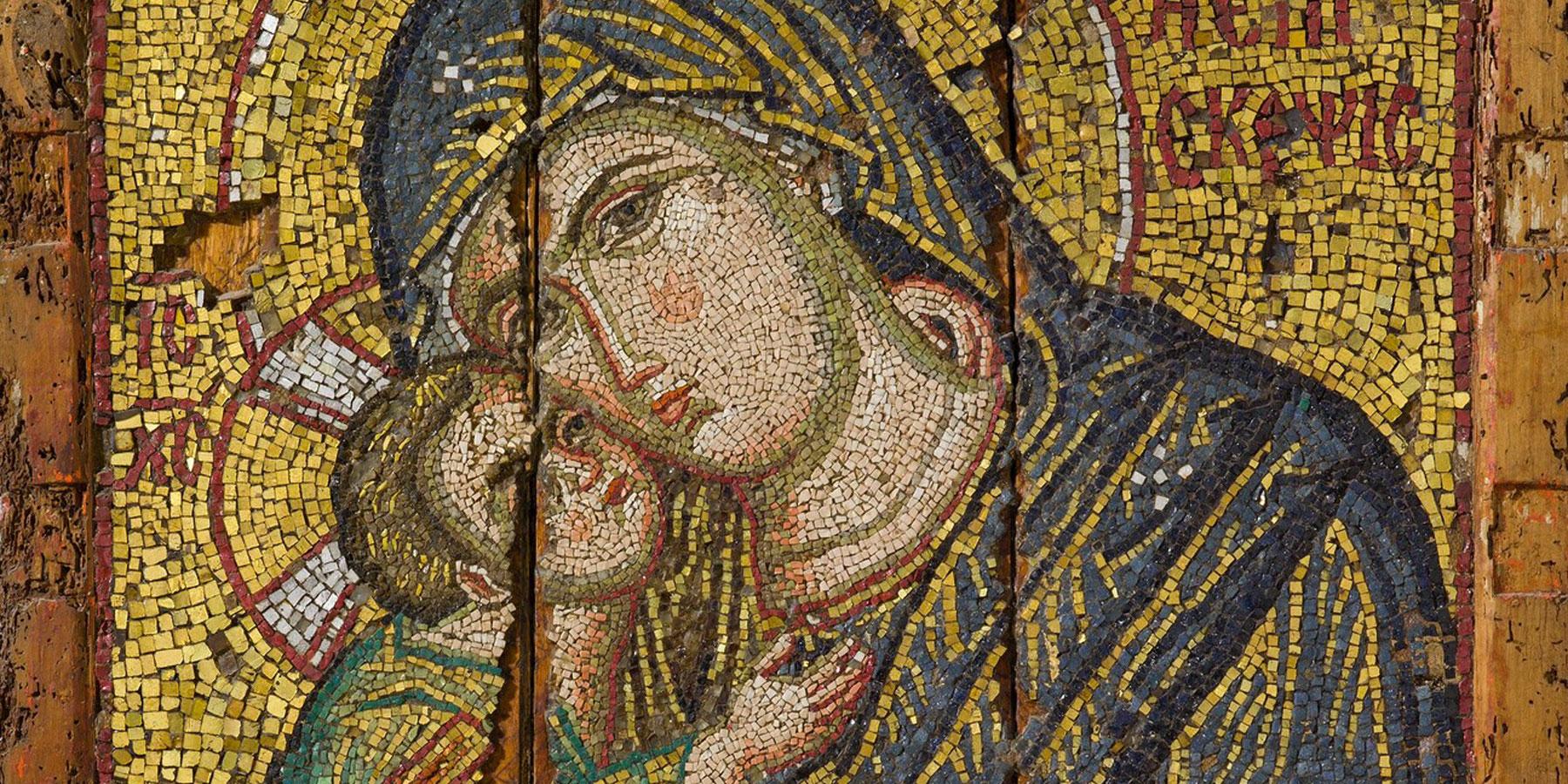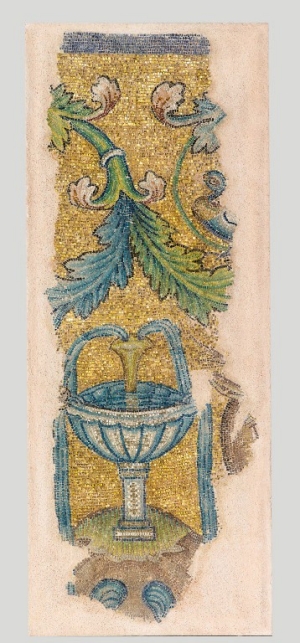Sculpture in the round, the preferred medium for images of pagan deities, disappeared in Byzantium and was replaced by its aesthetic opposite: mosaic. With figures depicted against a glimmering gold background, mosaics suggest an ethereal, heavenly realm. In antiquity, most mosaics adorned floors and so were usually made of colored stones that could withstand people walking on them. Because the Byzantines put mosaics on the walls, they could also use fragile materials: mother of pearl, gold and silver leaf, and glass of different colors. Small glass cubes, or tesserae, were placed at angles to catch and reflect the light, creating a sparkling, otherworldly atmosphere.
Portable mosaic icons are among the most luxurious works of Byzantine art. Very few examples are preserved, most of them small; the icon of the Virgin featured in the slideshow above is one of fewer than a dozen large mosaic icons to survive. Despite the areas of loss where the three wooden planks join, the high quality of this icon is clear from the use of tesserae of different sizes: largest for the background, smaller for the garments, and still smaller for the flesh tones. The costly technique and delicate modulations of color suggest that this icon was made in Constantinople.




